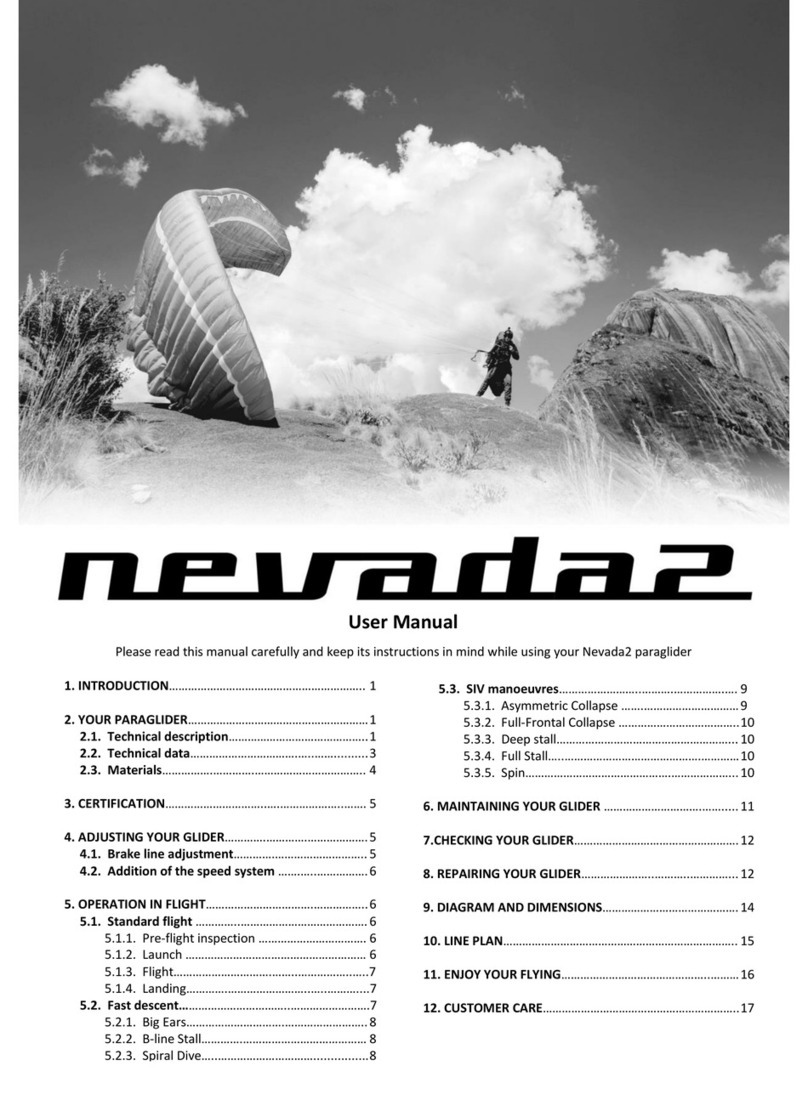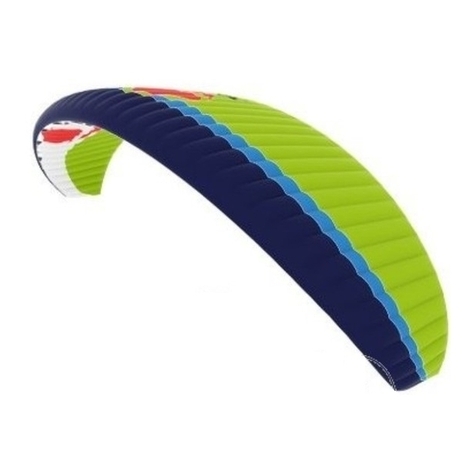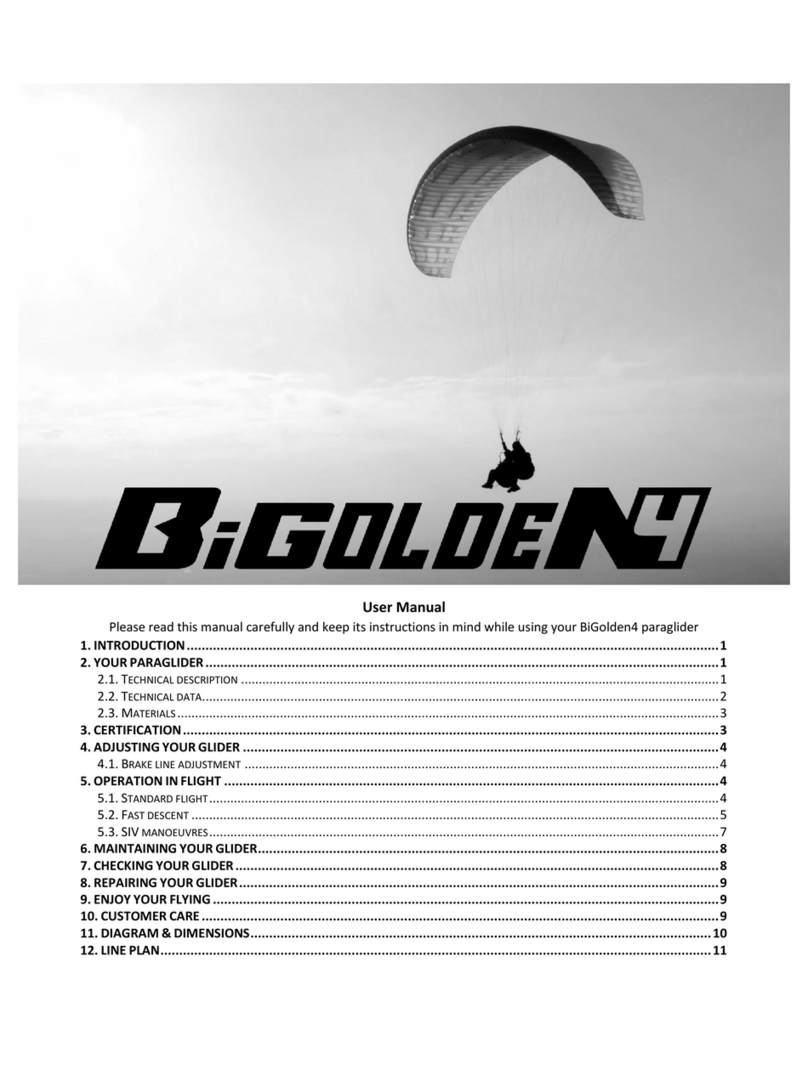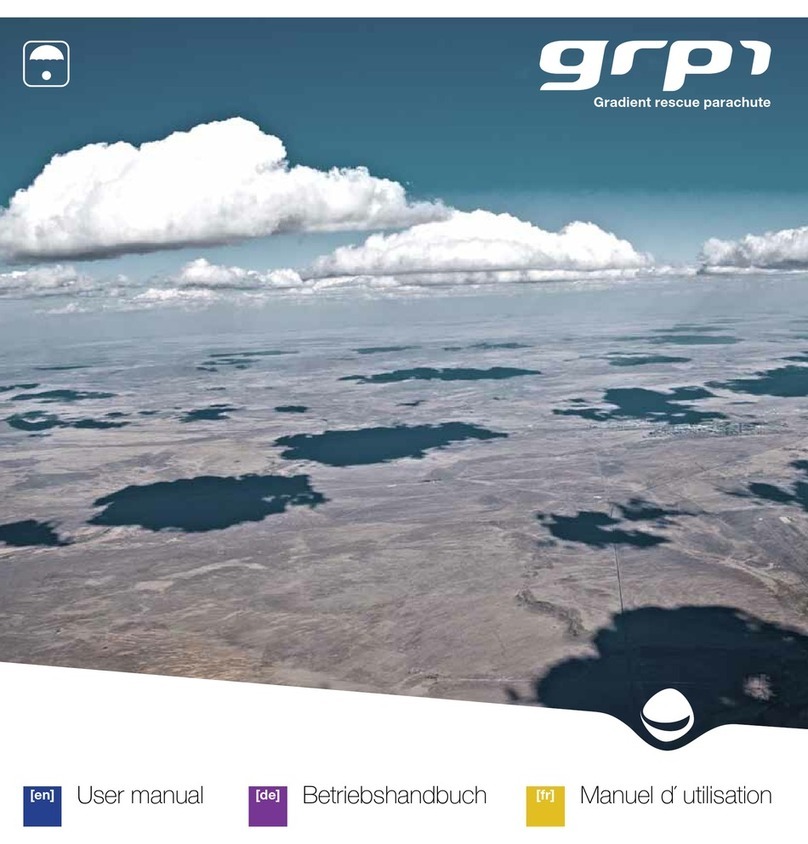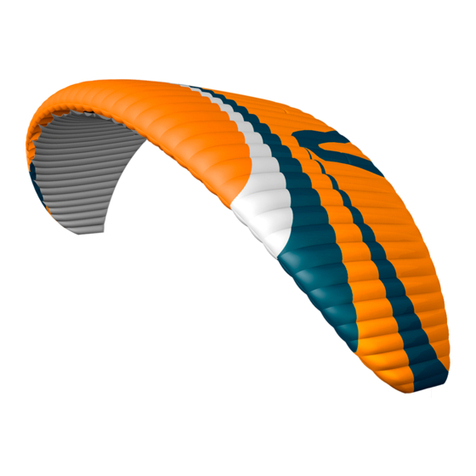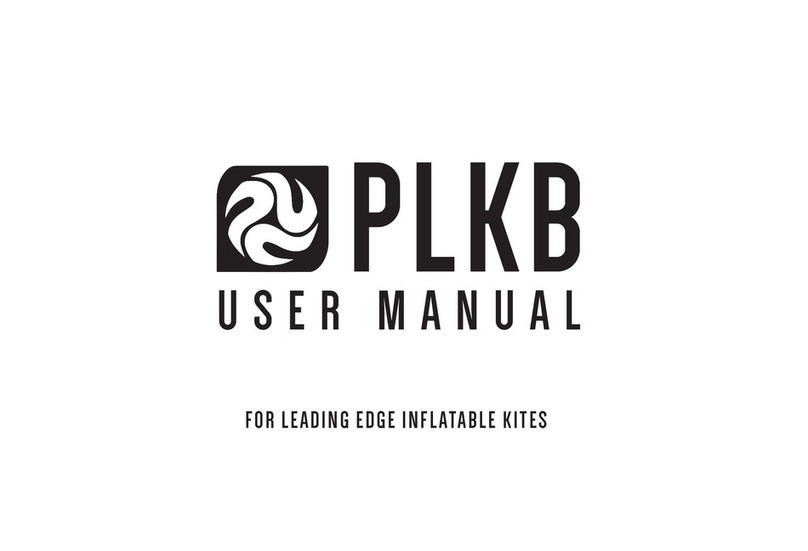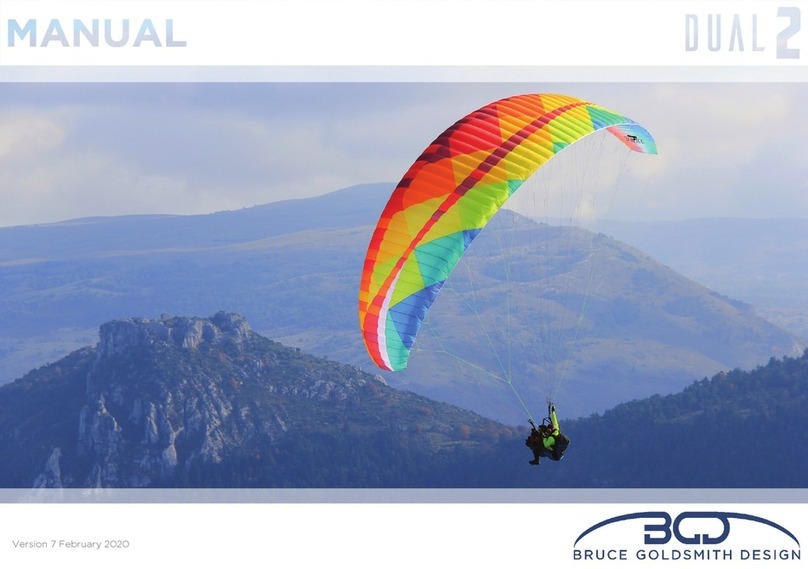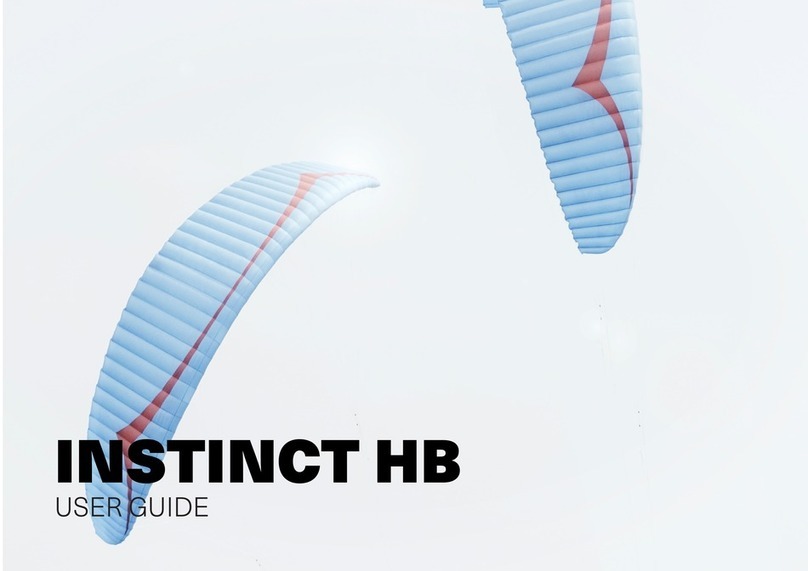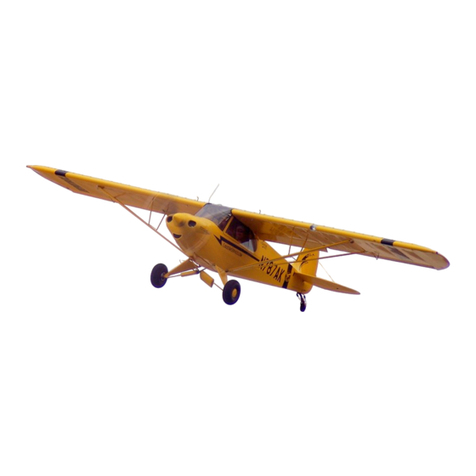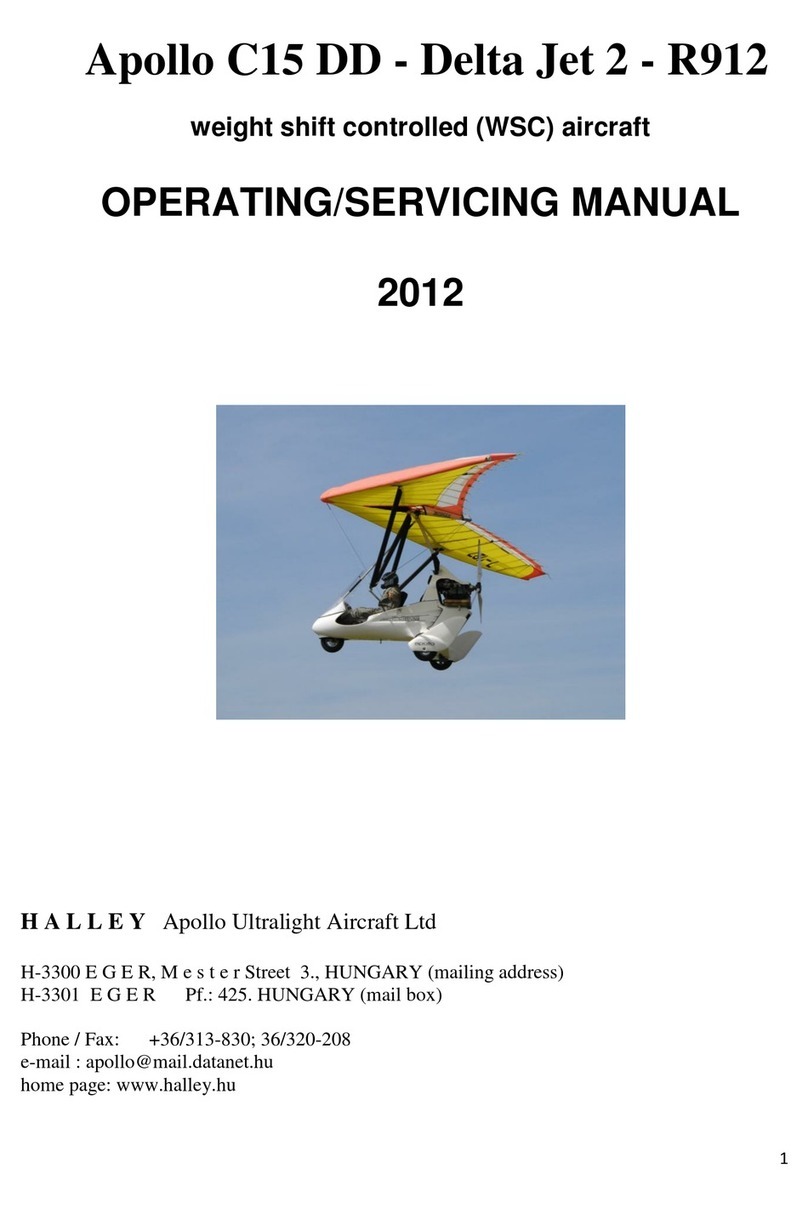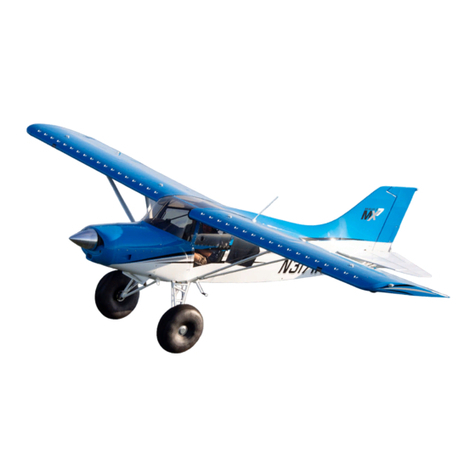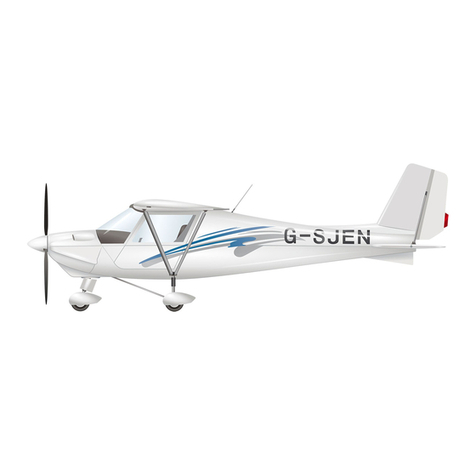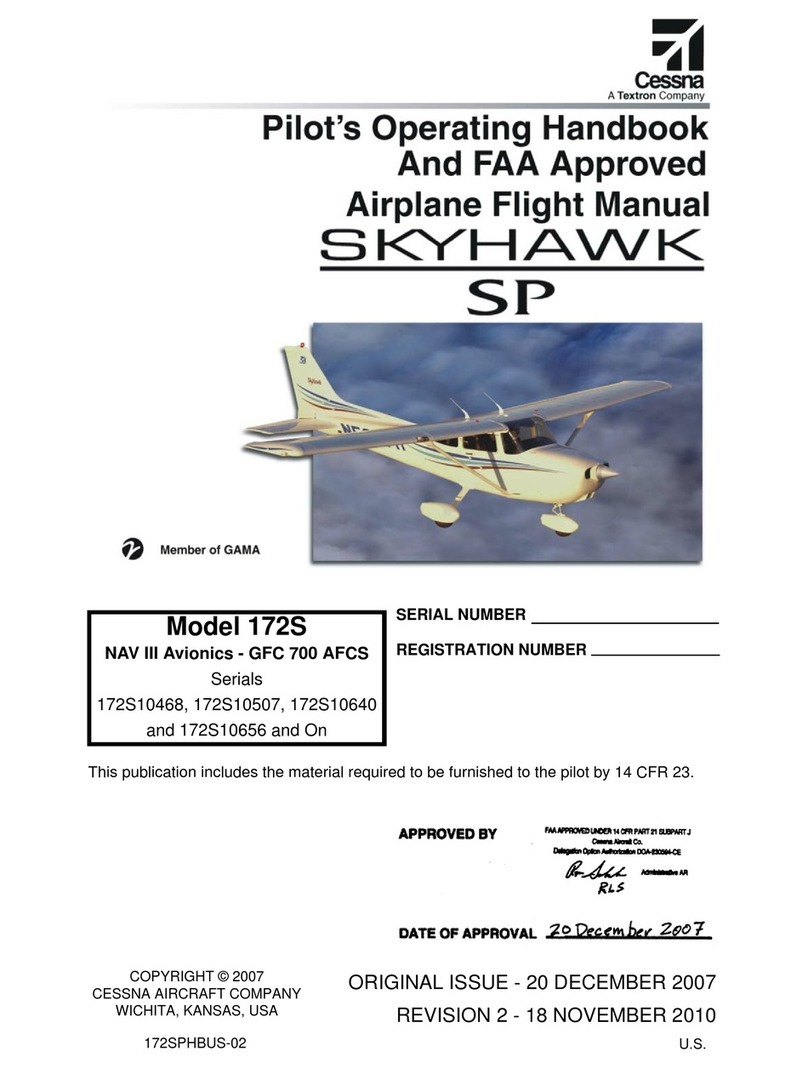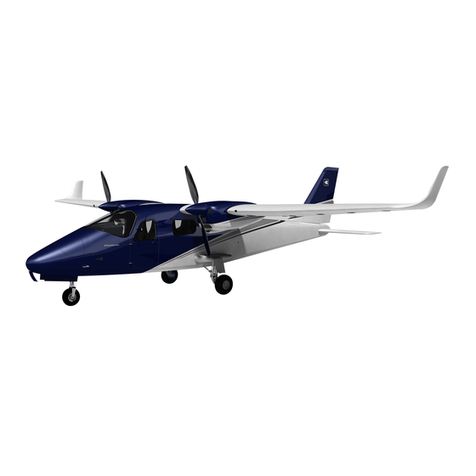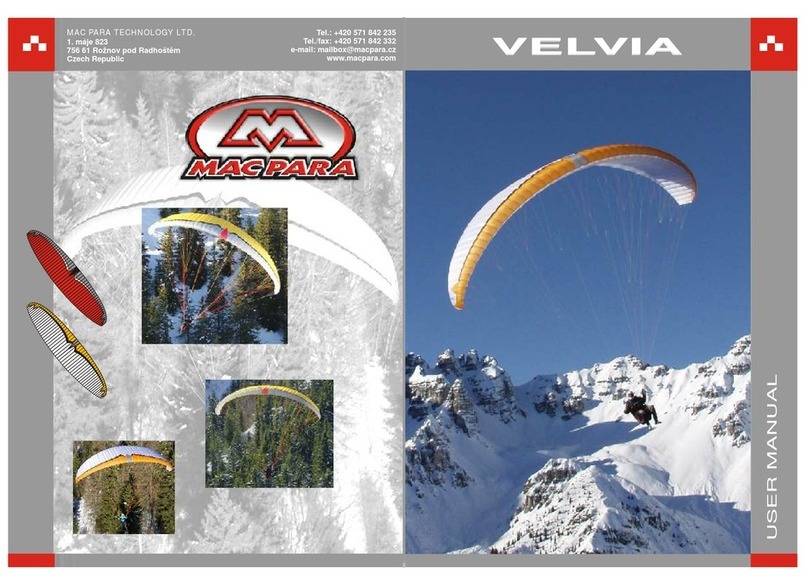Gradient BiGolden2 38 User manual

Pilot’s manual BiGolden2 Version no. 1, from 27.4.2009
BiGolden 2
USER MANUAL
Please read this manual carefully and keep its instruction
in mind when using your BiGolden2 paraglider

Pilot’s manual BiGolden2 Version no. 1, from 27.4.2009
CONTENS:
1. INTRODUCTION
2. DESCRIPTION OF PARAGLIDER
2.1. Technical description
2.2. Technical data
2.3. Specifications of materials
3. CERTIFICATION
4. ADJUSTING YOUR GLIDER
4.1. Break line lengths
5. FLIGHT OPERATIONS
5.1. Standard flight regime
5.1.1. Pre-flight inspection
5.1.2. Launch
5.1.3. Flight
5.1.4. Landing
5.2. Fast descent
5.2.1. Big ears
5.2.2. B-line stall
5.2.3. Spiral dive
5.3. Special flight operations
5.3.1. Collapse of one side of the sail
5.3.2. Frontal collapse of the canopy
5.3.3. Deep stall ("Sackflug")
5.3.4. Negative spin
6. MAINTENANCE AND STORAGE
7. REPAIRS
8. CONCLUSION

Pilot’s manual BiGolden2 Version no. 1, from 27.4.2009
1. INTRODUCTION
Congratulations on buying your new GRADIENT – BiGolden2! We believe that
you will be very enthusiastic about its performance and flight characteristics and
we are sure you will be fully satisfied with your new paraglider.
Former BiGolden was on the market since beginning of 2004 year and up to now
still belongs to the best tandem gliders on the market. It took a rather long time
to bring better tandem glider comparing to former BiGolden. We are very happy
we can say we were successful!
BiGolden2 is lighter, faster, more compact, has better handling and more
performance. Canopy is designed from well proven combination of different
materials - all Porcher Skytex premium quality. Reinforcement is made by new,
sticky adhesive laminated material like on Aspen3; this helps for better spreading
of tensions, especially on ribs attachment points. Line drag is reduced by well
proved DC dynema lines. In combination with Edelrid dyneema and aramid lines
give this solution an optimal balance of stronghold, durability and drag.
We are sure BiGolden2 is beautiful tandem glider with very nice handling; really
excellent successor of Bigolden.
BiGolden2 is classified as a bi-place paraglider, certified EN and is meant for a
large group of pilots: from hobby cross-country pilots to the professional tandem
pilots, who needs an exceptional safety, easy take-off and landing characteristics
from their paragliders.
This manual will help you become familiar with your new paraglider and also
provides information which will allow you to get the best from your glider and
keep it in good condition. If you have any further questions after reading this
booklet, please do not hesitate to contact our company or any authorised dealer
and we will gladly answer all your questions.
When you have become familiar with your new BiGolden2 we would welcome
any feedback that you might have about your new paraglider.
2. DESCRIPTION OF PARAGLIDER
2.1. Technical description
•BiGolden2 has an elliptical ground plan with a slight positive contortion of the
leading edge. This which means that the "ears" (stabilo) of the parachute
curve gently backwards. This modern design gives quite a few advantages.
•The profile is specially chosen for its aerodynamic stability. It's maximum
relative thickness, the layout of thickness and camber of the central curve was

Pilot’s manual BiGolden2 Version no. 1, from 27.4.2009
chosen to give the maximum resistance to premature air flow separation and
optimal control forces.
•The distribution of forces from attachment points on the carrying ribs is
effected by a completely new, special system of adhesive reinforcements,
made from a new fabric developed for Gradient by Porcher Marine.
•For better distribution of force within the canopy, diagonal segmented rib
technology is used. These segmented ribs are anchored to the attachment
points of lines A, B, C and distribute forces to the innerribs. This enables the
canopy to be divided into as few as thirteen carrying ribs on each side while
still retaining the correct aerofoil shape. Thanks to this, BiGolden2 has few
lines and therefore less drag. The result to the pilot of this reduced drag is a
higher top speed and better glide angle. Diagonal segmented ribs (compared
to non segmented diagonals) also increase compactness and canopy stability
especially in terms of a gliders capacity to recover from an asymmetric
collapse.
•A new form of “partly triangle cell openings” helps to inflate a canopy in wide
range of angle of attack. Graduated sized cell openings reduce the air
movements and aid pressure distributions within the glider.
•Five rows of lines (A, B, C, D, E) are used for the upper level of suspension
system. Suspension lines of rows D and E combine into main lines so a
system of four carrying risers can be used. This method helps to reduce drag
and gives maximum simplicity which pilots will appreciate especially during the
pre-flight checks and on launch. BiGolden2 is certified to be flown with a
trimmer on C and D risers with a working range of 8 cm.
•BiGolden2 is supplied with a well-
tried four-riser speed system with
split A-risers and a trimmers with
working range of 8 cm. Total length
of risers is 30 cm only.
Length of the BiGolden2 risers (mm):
Size 38+42: A
1
+A
2
B C D
Non-accelerated: 300 300 300 300
Accelerated: 300 300 340 380

Pilot’s manual BiGolden2 Version no. 1, from 27.4.2009
2.2 Technical data
TYPE: BiGolden2 38 BiGolden2 42
Area .......................................... 38.47 m
2
41.31 m
2
Span .......................……………. 14.32 m 14.84 m
Aspect ratio ..............…………… 5.33 5.33
Projected surface area …………. 32.91 m
2
35.34 m
2
Projected wingspan ...…………... 11.62 m 12.04 m
Projected Aspect ratio ………….. 4.10 4.10
Max. chord .................………….. 3.34 m 3.46 m
Min. chord ..........…........……….. 0.66 m 0.69 m
No. of cells ................................. 54 54
Max. line length (B) ……………… 8.49 m 8.80 m
Weight ........................................ 7.4 kg 7.9 kg
Min. pilot weight ..........………….. 115 kg 140 kg
Max. pilot weight ..........…………. 180 kg 220 kg
EN category ………………...…… B B
2.3. Specifications of materials
Canopy
Upper Sail .….…..
Porcher Marine SKYTEX 9092 E85A-Evolution, 45 g/m
2
Porcher Marine SKYTEX 9017 E38A-Classic, 40 g/m
2
Bottom Sail ..….…
Porcher Marine SKYTEX 9017 E38A-Classic, 40 g/m
2
Ribs ................... Porcher Marine SKYTEX 9092 E29A, Hard finish, 45 g/m
2
Porcher Marine SKYTEX 9090 E29A, Hard finish, 40 g/m
2
Reinforcements ... Scrim F 02 420 X15A, 180 g/m
2
;
Dacron 160 g/m
2
Adhesive laminated PES, 80 g/m
2
Suspension system
Lines ...................
Liros DC 120 / ∅0.8 mm - strength 120 daN
Edelrid Dyneema 7850-100 / ∅1.1 mm - strength 125 daN
Edelrid Dyneema 7850-130 / ∅1.3 mm - strength 156 daN
Edelrid Dyneema 7850-160 / ∅1.4 mm - strength 186 daN
Edelrid Dyneema 7850-200 / ∅1.6 mm - strength 230 daN
Edelrid Aramid 6843-160/ ∅1.5 mm - strength 185 daN
Edelrid Aramid 6843-200/ ∅1.8 mm - strength 220 daN
Edelrid Aramid 6843-240/ ∅2.1 mm - strength 257 daN
Edelrid Aramid 6843-340/ ∅2.4 mm - strength 354 daN
Risers ................. PAD 1.6 / 25 mm
Pulleys ................ Riley Australia
Karabiners .......... Maillon Rapide ∅4.0 mm, ∅3.0 mm

Pilot’s manual BiGolden2 Version no. 1, from 27.4.2009
3. CERTIFICATION
Paraglider BiGolden2 has passed European certification EN in category B in
both sizes 38 and 42. The EN certificate of each BiGolden2 is to be found on the
rib in the middle of canopy.
NOTICE:
Paraglider BiGolden2 is constructed for hill or tow
launches. Use of subsidiary motor has not been tested for by the
manufacturer or by the DHV!
THIS GLIDER IS NOT MEANT FOR JUMPING FROM
A PLANE, BALLOON OR FOR JUMPS WITH A
BELATED OPENING OF THE CANOPY!
4. ADJUSTING YOUR GLIDER
Every BiGolden2, before it is given to a customer, goes through a final check-up
and test-flight to verify that its characteristics and measurements correspond to
the manufacturer's specifications. You may only make adjustments to the break
line lengths and only then in keeping with the recommendations of this manual.
Other adjustments or changes to your BiGolden2 lead to a loss of guarantee,
airworthiness and validity of the European certification - amateur modification
may endanger yourself and other pilots. If you do have any suggestions on
improvements let us know and our test-pilots will try out your ideas without risk
to yourself.
4.1. Brake line adjustment
When you receive your new BiGolden2 the brake line-length is adjusted to be
the same as that used during the tests. This length should suit most pilots and is
indicated on the main control line. It is of course possible to adjust the break line
length to suit each pilot's physical build, height of harness hang points, or style of
flying.
We recommend that you act wisely when adjusting break line length and
change the length in small successive steps.
If you need to adjust brakes back to the basic position and the marks on the
main brake lines are vague, use for BiGolden2 42 lengths 310 cm and for
BiGolden2 38 lengths 297 cm.

Pilot’s manual BiGolden2 Version no. 1, from 27.4.2009
Break lines that are too short:
1) may lead to fatigue from flying with your hands in an unnatural position,
2) will impede recovery from certain unstable manoeuvres and
3) will certainly reduce your glider's speed range.
Brakes that are too long will:
a) hamper pilot control during launch,
b) reduce control in extreme flying situations
c) make it difficult to execute a good flare when landing.
Each break line should be tied securely to its control handle. Only use knots
which will guarantee this such as a dragon's knot, etc.
5. FLIGHT OPERATIONS
This manual is intended as a guide to the characteristic
features of your new BiGolden2 paraglider. Under no
circumstances should it be as a "learn-to-fly" manual for
paragliding or as a substitute for a paragliding pilots
training course.
5.1 Standard flight regime
5.1.1 Pre-flight check
A thorough pre-flight check is essential for safe flying and that's why you should
pay special attention to it. Above all you should check that the canopy, lines and
risers are free from damage and tangles. Also don't forget about your harness
and your reserve parachute.
Before the launch spread the canopy out into a slight arc and check that:
•all cell openings are free
•no lines are looped around or under the canopy
•no lines are tangled or have a knot on them
•any twigs, grass or other objects are not entangled in the lines or the canopy
•risers are not twisted
•control lines run freely through the pulleys
•knots on control handles are secure
•carabiners on risers are tightened
•trimmers on both sides are equally adjust !

Pilot’s manual BiGolden2 Version no. 1, from 27.4.2009
5.1.2 Launch
Launching the BiGolden2 is straight forward, either by front launch or by reverse
launch. A dynamic pull of the front risers (A) will bring the canopy simply and
easily above the pilot's head. The canopy inflates from the centre equally and
fluently. BiGolden2 has no tendencies to outrun the pilot and quickly stabilises
above the pilot. Don't forget about visually checking the canopy and its lines
before the actual launch!
Take off can be made easier by a light pull on the brakes.
The BiGolden2 requires no modification or particular manoeuvre for launching by
the winch.
5.1.3 Flight
When the trimmers are closed (putted down) and brakes are loose, BiGolden2 is
trimmed to fly at best glide angle.
The best sink rate is produced with both the control lines drawn down evenly to
about 20%-25% of their range.
When the trimmers are open, BiGolden2 is trimmed to fly at maximal speed.
Flying in turbulent conditions
When flying through severe turbulence it is recommended that the canopy is
stabilised by simultaneously applying a little brake to both sides. Flying with
a little brake applied will also help to prevent deflations and allow you to get more
feedback from your glider about how the turbulent air influences the behaviour of
your paraglider. Responding correctly to the paraglider's movements by means
of the breaks and weight shift is known as "active flying" . A pilot demonstrating
good active flying skills will significantly reduce both the number and severity of
collapses he or she experiences.
Turning
The BiGolden2 is very comfortable and pleasant in turns. The handling
characteristics are very responsive and accurate and demand no special habits
or non standard procedures.
When developing the BiGolden2 special attention was devoted to the control
forces required to manoeuvre the paraglider. The result is that the break travel
and force has been optimised. In flight the control forces firm but responsive and
precise and allow for a perfect communication with the canopy. Break pressure
is reassuringly progressive.

Pilot’s manual BiGolden2 Version no. 1, from 27.4.2009
5.1.4 Landing
Landing with BiGolden2 is very simple and without difficulties. On your first flights
you may be surprised at just how well it glides. Take account of this when
making your landing approach! Against a wind, at about 1m above the ground
you may pull down the brakes all the way. Under zero wind conditions, or if
forced to make an emergency landing down wind you may prefer to take a wrap
of each control line so as to enable a more dynamic flare.
5.2. Rapid descent
Every pilot will sooner or later be in a position when he/she has to quickly
decrease his/her altitude. This situation may come about as the result of
a sudden and unexpected change in the weather, Reaching cloudbase and not
wishing to enter the disoreentating cloud, or simply because you need to finish
your flight quickly. Also if the landing approach takes place through thermals, it is
often very difficult to finish your flight without a rapid descent method being
employed. There are three main methods for achieving a rapid descent and
they are: "Big ears", "B-stall" and "Spiral dive".
5.2.1 Big-ears
This is the easiest technique for a rapid descent. Depending on how much of the
wing tip you deflate between 3 to 6 m/s sink rate can be achieved.
- initiation: Take hold of the outer A-lines on both sides as high as possible and
pull them down fluently and hold them firmly. The effective area of the paraglider
is reduced equally on both sides of the wing. The size of the deflated area
depends on how deeply the lines are pulled down. Be sure to pull both sides
equally.
- recovery: Under normal circumstances BiGolden2 opens automatically when
the A-lines are released. The opening may be accelerated by gentle repeated
braking symmetrically on both sides (slightly "pumping" the breaks).
5.2.2 B-line stall
B-line stall can be use on BiGolden2. This flight technique is a very effective
way of making a rapid descent, but on account of compactness of canopy and
small lengths of risers, is it not very simple. Depending on how much the B-risers
are pulled down, the sink rate is between 6 and 10 m/s.
- initiation: Take hold of the B-risers at the top and smoothly pull them down
until the canopy shows a spanwise crease where the the B-lines attach to the
sail. Your sink rate will increase considerably while your forward speed will
decrease to practically zero. Don't be startled when the air flow over the top

Pilot’s manual BiGolden2 Version no. 1, from 27.4.2009
surface is detached and the canopy enters a parachutal stall without moving
forward. It will soon stabilise above your head.
- recovery: On releasing the B-risers BiGolden2 automatically returns to
normal flight without staying in deepstall (sackflug) or shooting in front of the
pilot. Let go of the risers smoothly and symmetrically.
Caution: If the B-risers are released unevenly the canopy could enter a turn on
release from the B-stall. If the risers are released slowly and very unevenly it
could start a spin.
5.2.3 Spiral dive
The spiral dive is the most effective way of making a fast descent. Every pilot
should be able to perform a spiral dive and one day you may need to. Always be
aware of your altitude which decreases very rapidly during a spiral dive. The sink
rate reached in a spiral dive can be more than 20 m/s!
During the spiral dive the pilot and glider will experience strong centrifugal
forces: the overload could be more than 3 g (!) which is a great demand on the
pilot. The glider is strained just as much!
- initiation: Smoothly pull on one brake so that the the glider goes from a
normal 360-turn into a steep turn and from there into a spiral dive. The transition
into a spiral dive can be made easier by weight shifting to the inner side of the
turn. Keep an eye on the tension of the control line all the time - reduced tension
signalises an overload of the glider and danger of falling into a negative spin.
- recovery: BiGolden2 recovers from a spiral automatically as soon as the
brakes are released. Release them smoothly and always finish a spiral dive with
safe altitude!
5.3 Special flight regimes
No matter what category of canopy you fly or what level of certification it has, in
turbulence or in strong thermals you may experience all kinds of collapses.
BiGolden2 behaves comfortably in these situations, indeed not only does
BiGolden2 deal with extreme flight regimes automatically, but also offers an
above average degree of safety. Even so, you must follow all safety rules when
practising special flight operations and always pay attention to your altitude!
Before performing special flight regimes remember:
•practise reserve deployment on the ground, in a simulator, so that reserve
deployment is automatic and efficient.
•Rapid altitude loss and considerable rotational forces may develop during
unstable manoeuvres. Take account of these factors in the context of reserve
deployment!

Pilot’s manual BiGolden2 Version no. 1, from 27.4.2009
5.3.1. Collapse of one side of the canopy
- initiation: Take hold of the outer A-lines on one side and pull them down
smoothly. The wing tip will collapse downward forming a characteristic "big ear".
The size of the ear depends on the depth to which the lines are pulled as well as
the number of lines pulled down. You can stop any tendencies to turn by
applying the opposite brake and by weight shifting onto the inflated side of the
canopy.
- recovery: Under normal conditions BiGolden2 will re-inflate spontaneously
when the pulled lines are released. The inflation time and loss of altitude can be
reduced by suitable action of the pilot. To stop any tendencies to turn off course
pull brake on the inflated side (be careful not to overreact and stall the inflated
side) and weight shift to that side. If the collapse remains then reinflate the
collapsed side by "pumping" the brake on the collapsed side to quicken the
inflation.
5.3.2. Frontal collapse of canopy
- initiation: Take hold at the top of both A-risers and pull them down until the
leading edge collapses.
- recovery: In normal conditions BiGolden2 recovers normal flight automatically
as soon as the front risers are released. Opening may be assisted by applying
the brakes on both sides simultaneously.
5.3.3. Deep stall ("sackflug")
- initiation: Pull both brakes smoothly until the sink rate increase markedly and
the forward speed reaches almost zero. The pull on the brakes should be
controlled so that the canopy stays inflated and doesn't fall back into a full stall.
- recovery: BiGolden2 cannot stay in this regime of deep stall flight, so after the
brakes are released the glider automatically and returns into normal flight. If you
need to, you may accelerate the recovery of the glider by one of two methods:
Either you can pull both brakes intensely followed by a fast release of brakes or
you can pull on the A-risers lightly.
Caution: If you pull on the A-risers too intensely you may experience a frontal
collapse of the leading edge.
5.3.4 Negative spin
- initiation: Slow down by braking to nearly minimum speed. Then pull a brake
on one side all the way down while simultaneously releasing the brake on the
other side. Because the stalled side falls back, the canopy suffers air flow

Pilot’s manual BiGolden2 Version no. 1, from 27.4.2009
separation over one half of the wing which results in a spin and a rapid loss of
altitude.
- recovery: Under normal circumstances BiGolden2 is capable of recovering
from a negative spin automatically when brakes are released.
Caution: In general when there is a very fast or a long-lasting rotation and when
the brakes are released too quickly, the canopy may shoot in front of the pilot
followed by a massive asymmetrical collapse.
Warning: In all regimes where the air flow is separated there is always a rapid
increase in sink rate and therefore a substantial loss of altitude.
And remember: A wrong manoeuvre at the wrong time may change a
fairly easy situation into a dangerous problem and furthermore you are
exposing your glider to forces which may damage it. So practise your
pilot abilities for these special flight regimes only under the supervision
of your instructor and with a reserve parachute!
6. MAINTANENCE AND STORAGE
If you handle your glider with care and store it in a suitable place it can last you a
very long time. On the other hand neglecting maintenance, bad storage and the
use of unsuitable cleaning products can reduce the lifetime of your glider
significantly or may even make a dangerous subject out of it.
You must keep to these rules:
•Choose a suitable area for your launches. Lines caught on roots or rocks lead
to unnecessary strains on the attachment tabs during inflation. Snagging lines
may rip the canopy tissue or damage lines.
•When landing, never let the canopy fall on its leading edge in front of the pilot.
The effect of these forceful collisions and the sudden pressure increase can
severely damage the air resistant coating of the canopy as well as weakening
the ribs and seams.
•Protect the canopy from unnecessary strain. Inconsiderate handling of your
glider, namely pulling it over grass, soil, sand or even over rocks, will
significantly reduce its lifetime and increase its air-porosity.
•When preparing the paraglider for a launch or when ground handling, be sure
not to step on any of the lines or the canopy.

Pilot’s manual BiGolden2 Version no. 1, from 27.4.2009
•Don't tie any unnecessary knots in the lines. A packing method where special
knots are made in the lines as used on parachutes and reserve parachutes
aren't suitable for packing the lines used on paragliders.
•Protect your canopy and lines from unnecessary exposure to sunlight. UV-rays
can damage many parts of a paraglider.
•Try not to pack your glider when wet. If there's no other way then dry it as
soon as possible but away from direct sunlight.
•Don't let your glider come into contact with sea water. If it does, rinse (the
lines, canopy and risers) with fresh water and dry before storing.
•After flight or when storing, always use the inner protection sack.
•When storing or during transport make sure your glider isn't exposed to
temperatures higher than 50 degrees Celsius.
•Never let the glider come into contact with chemicals. Clean the paraglider
with clean lukewarm water only.
•For long-term storage don't pack the glider too tightly and store it in a cold, dry
and well-ventilated room.
•After tree- or water landings always examine the glider carefully. If you
suspect that the flight features of your paraglider have changed, contact the
nearest authorised GRADIENT supplier as soon as possible.
•After 200 flying hours or after 2 years at the latest your BiGolden2 must be
thoroughly checked and tested by the manufacturer.

Pilot’s manual BiGolden2 Version no. 1, from 27.4.2009
7. REPAIRS
Only small repairs may be done by the user which means repairs that don't
change the airworthiness of the paraglider. Among these are fixing small tears
(besides seams) up to 10 cm, changing damaged lines or the change of rubber
line-fixation-rings on the small carabiners.
When repairing your paraglider on your own keep the following rules:
•When repairing the sail use self-adhesive patch specified for this purpose. To
every BiGolden2 the manufacturer encloses an amount of self-adhesive
material which is enough for usual repairs during the usage of your paraglider.
•The only admissible repairs done on lines are those where the damaged lines
are changed for new ones, exclusively supplied by the manufacturer of
BiGolden2, authorised dealer or service. When putting an order for lines use
code indicators given in the attached diagram of suspension lines. Also give
the indicator “BiG2” (BiGolden2) and the size of the canopy of your glider, i.e.
BiG2 42, followed by the line code; for example:
- the outside long line in line A for BiGolden2 42: BiG2 42 A 1.3
•An exception is changing a control line in the terrain. For this purpose the
manufacturer encloses a spare line with every BiGolden2 with a prepared
loop on one end. The right length should be adjusted according to the same
line on the opposite side of the canopy and then attach your break handle. As
soon as you can yourself swap the line for an original one from your
authorised GRADIENT service centre.
•After any changing of lines a thorough pre-flight check must be done! Don't
hesitate to ask your instructor or an experienced colleague for help. If you're
not sure, entrust the job to either the manufacturer or an authorised
GRADIENT dealer.
•If you have to replace any of the line-tidy rings (a spare ring is supplied with
each BiGolden2). Don't forget to check that the lines haven't been swapped
accidentally and that they are returned to the small karabiner in the correct
order.

Pilot’s manual BiGolden2 Version no. 1, from 27.4.2009
BiGolden2
BiGolden2BiGolden2
BiGolden2
- system of suspension
3.1 3.2 3.3 3.4 3.5 3.6 3.7 3.8 3.9 3.10 3.11 3.12 3.13
2.1
2.2 2.3 2.4 2.5 2.6
ROW
A
1.1 1.2 1.3
S4
S5 S6 S7
3.1 3.2 3.3 3.4 3.5 3.6 3.7 3.8 3.9 3.10 3.11 3.12 3.13
S2 S3
2.1
2.2 2.3 2.4 2.5 2.6
ROW
B
1.1 1.2 1.3
3.1 3.2 3.3 3.4 3.5 3.6 3.7 3.8 3.9 3.10 3.11 3.12 3.13
2.1
2.2 2.3 2.4 2.5 2.6
ROW
C
1.1 1.2 1.3
ROW
E
3.1 3.2 3.3 3.4 3.5 3.6 3.7 3.8
3.1 3.2 3.3 3.4 3.5 3.6 3.7 3.8 3.9 3.10 3.11 3.12 3.13
2.1
2.2 2.3 2.4 2.5 2.6
ROW
D
1.1 1.2 S1
3.1 3.2 3.3 3.4 3.5 3.6 3.7 3.8 3.9 3.10 3.11 3.12 3.13
2.1 2.2 2.3 2.4 2.5 2.6
BREAKS
R
1.1 1.2 1.3
0
MIDDLE OF
THE CANNOPY

Pilot’s manual BiGolden2 Version no. 1, from 27.4.2009
8. CONCLUSION
Even though BiGolden2 has outstanding performance and stability, it must be
understood that even the safest paraglider is an aircraft and that all air-sports can
be relatively dangerous.
Remember that not only your safety, but your passengers too, lies in your own
hands!!!
Never underestimate weather conditions and never forget that you are flying for
pleasure and not to become a „fallen Hero". Remember this and the fun that only
free-flying can bring will be yours.
We believe that your sensible attitude and the flight characteristics of your
BiGolden2 will combine to ensure you Fantastic flying.
GRADIENT wishes you many fabulous flights and happy landings.
ONDŘEJ DUPAL VÁCLAV SÝKORA
This manual suits for next models
1
Table of contents
Other Gradient Aircraft manuals
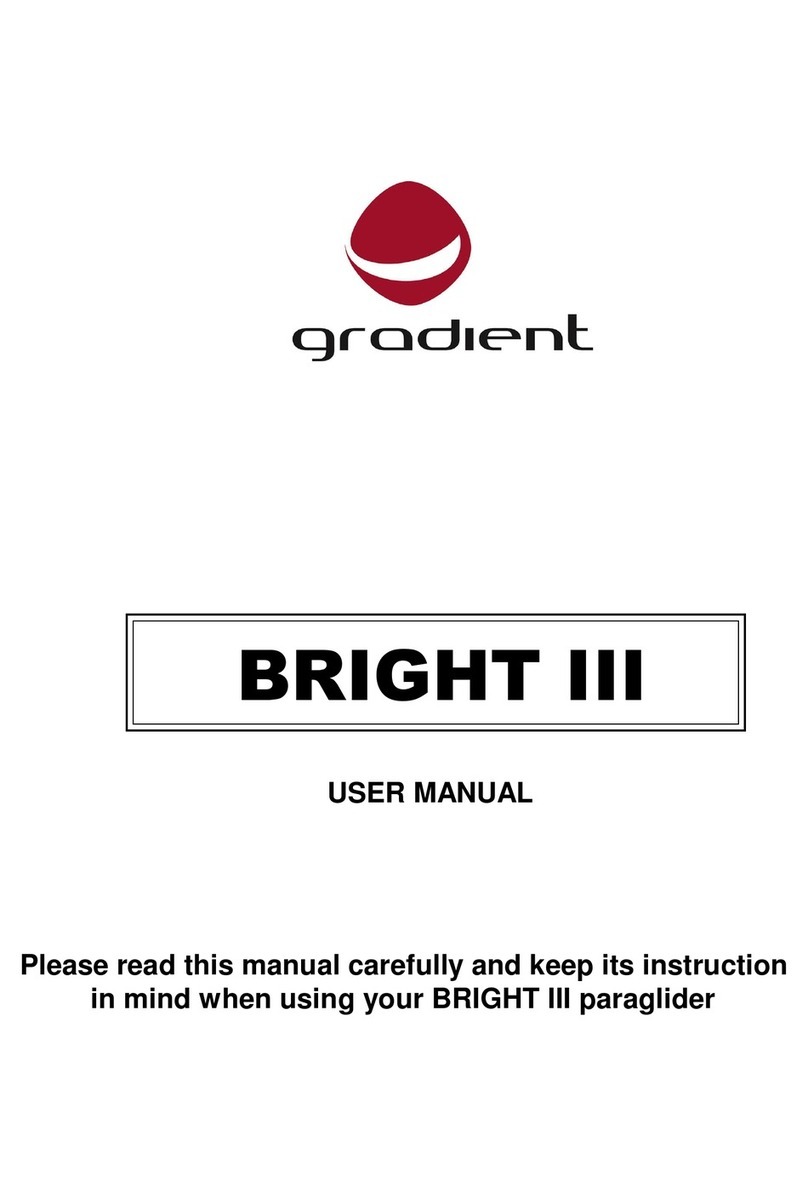
Gradient
Gradient BRIGHT III User manual
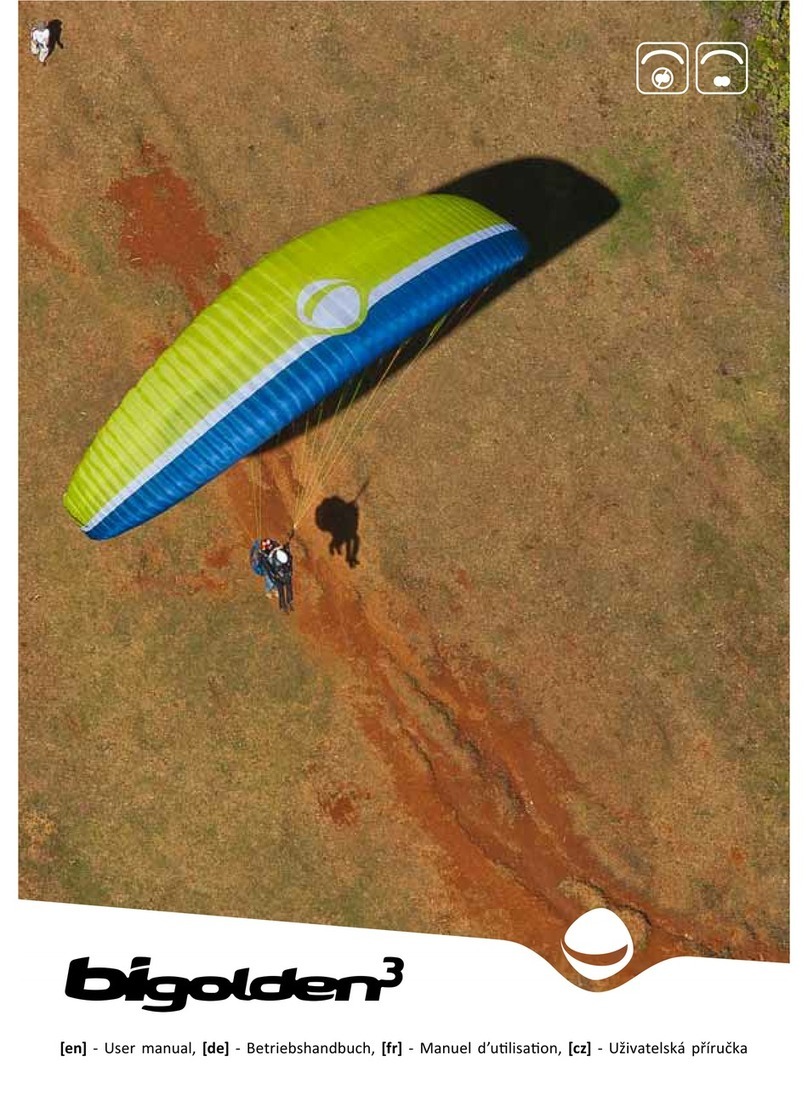
Gradient
Gradient bigoldern3 User manual
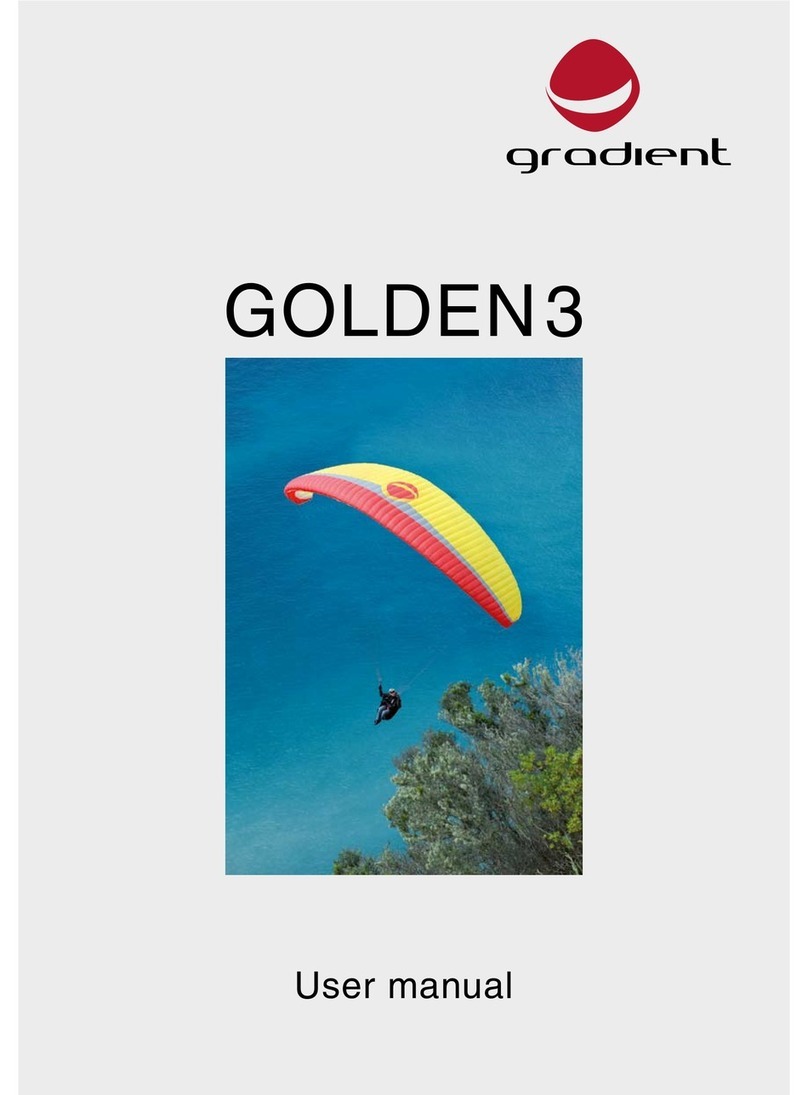
Gradient
Gradient GOLDEN3 User manual
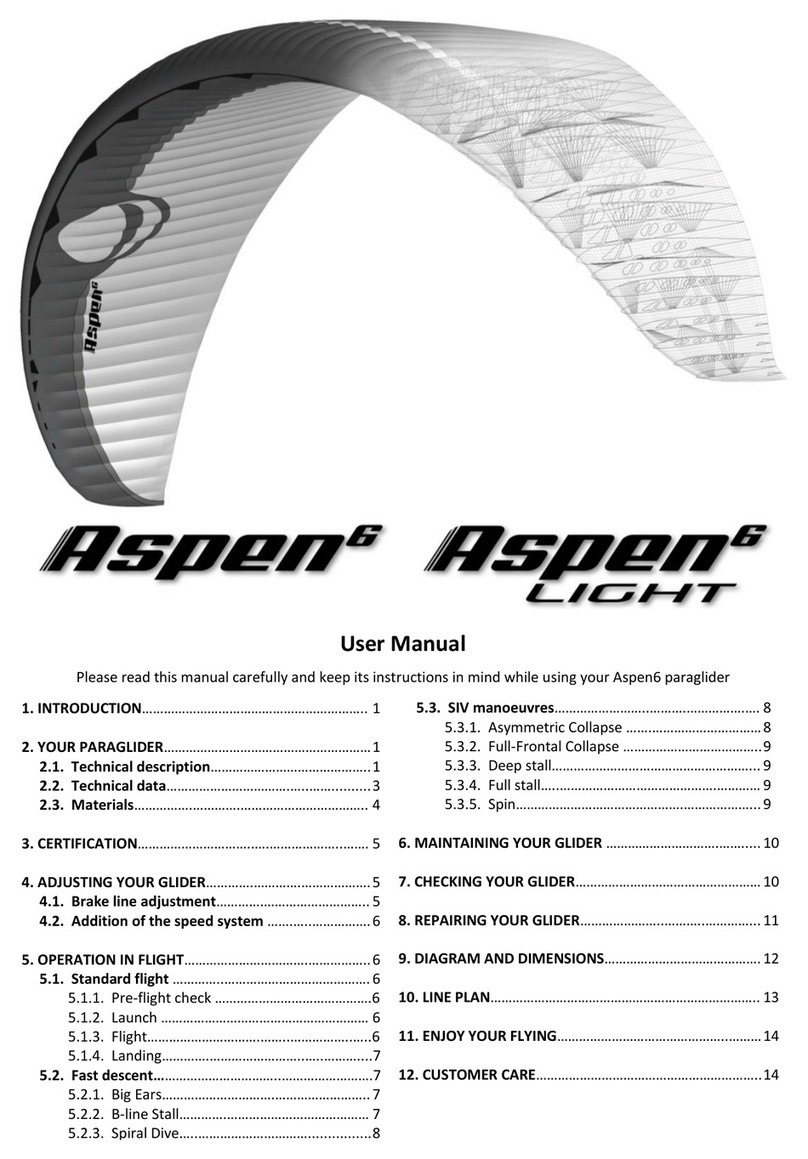
Gradient
Gradient Aspen 6 User manual
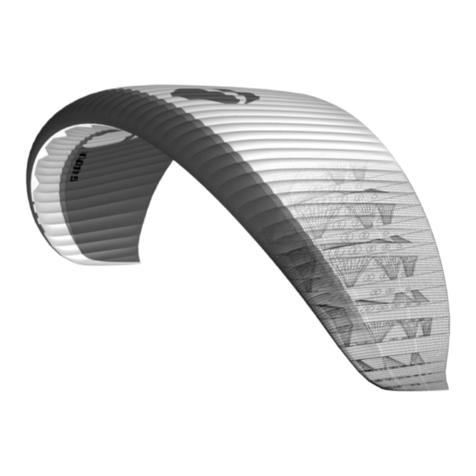
Gradient
Gradient Montana 3 User manual
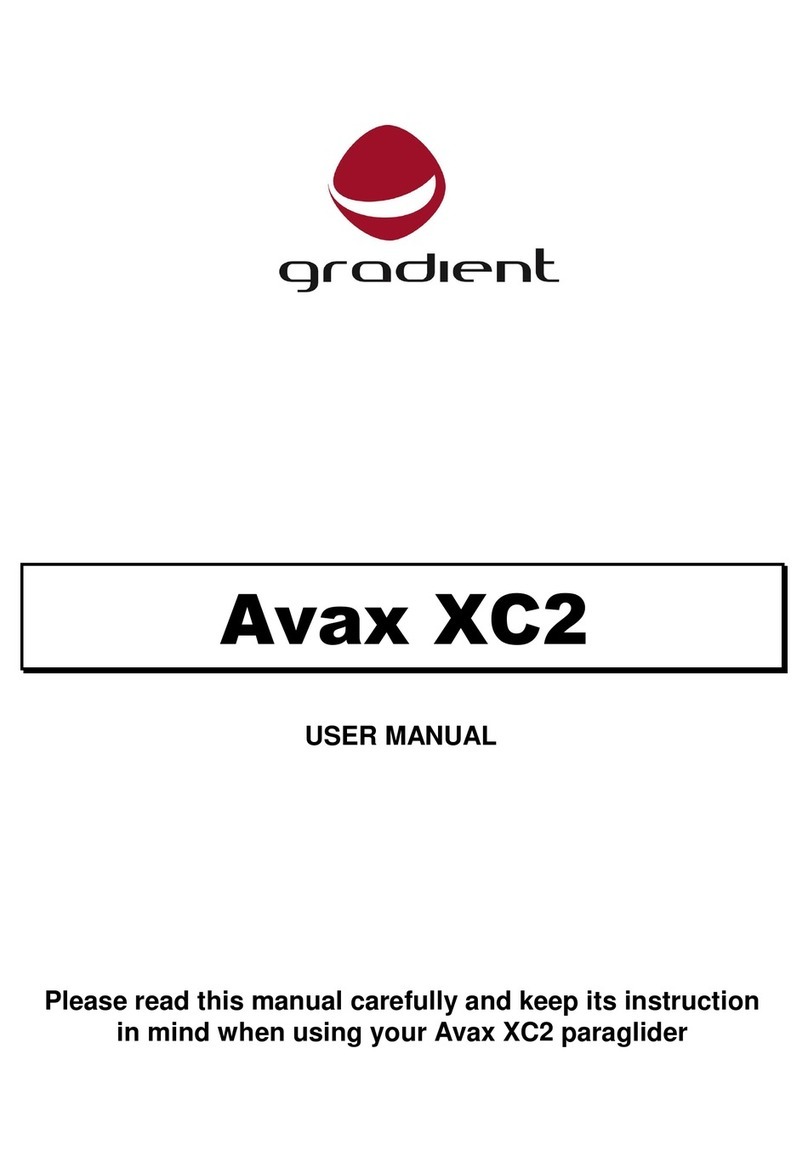
Gradient
Gradient Avax XC2 User manual
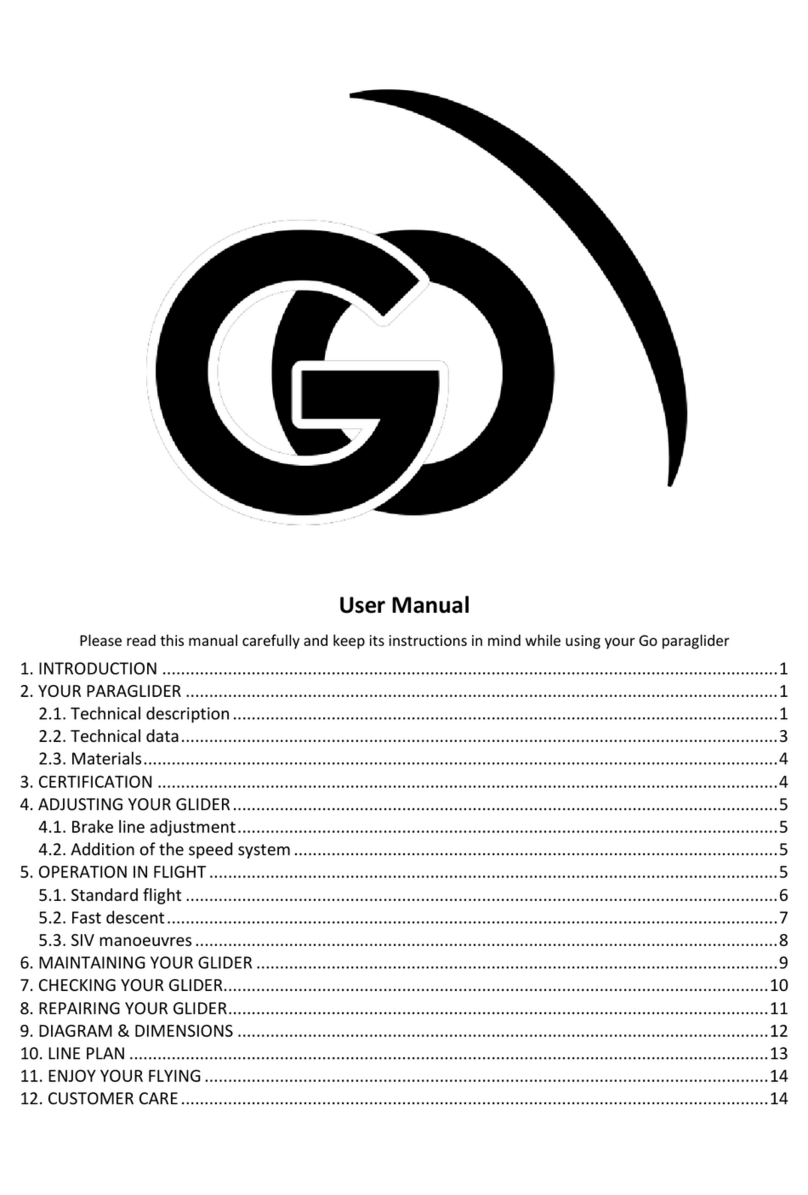
Gradient
Gradient GO Series User manual
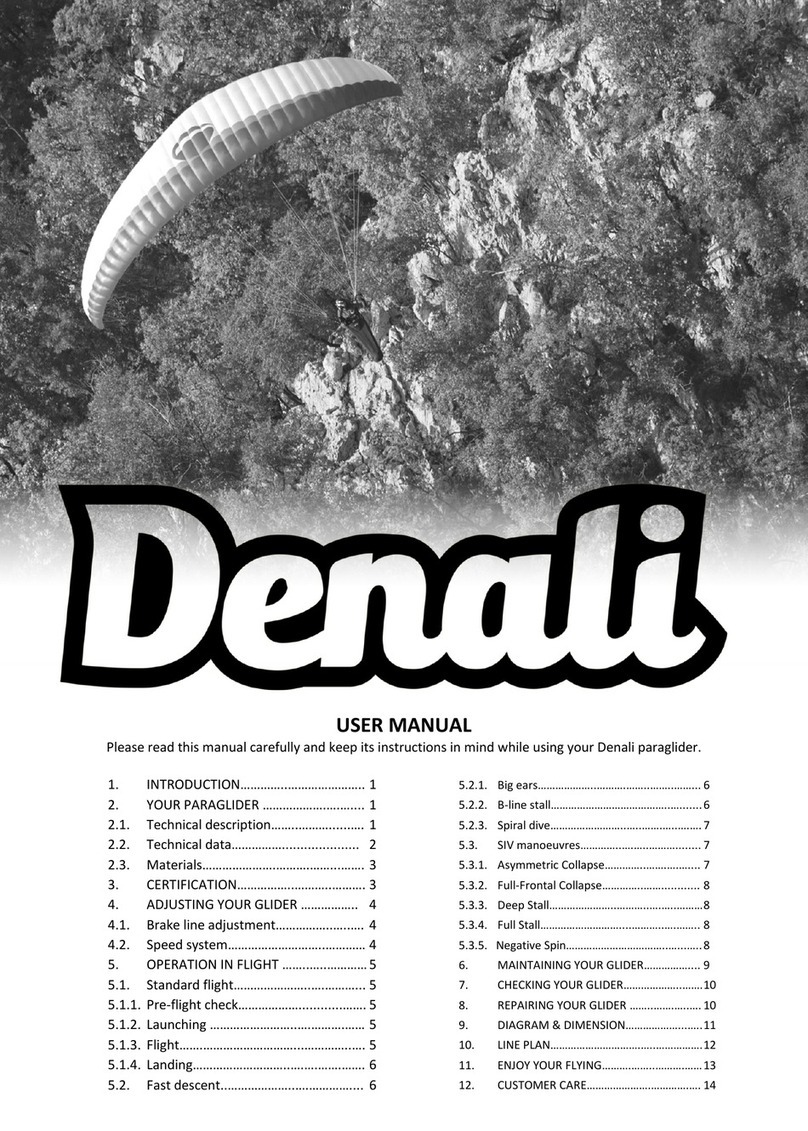
Gradient
Gradient Denali User manual

Gradient
Gradient FREESTYLE 2 User manual
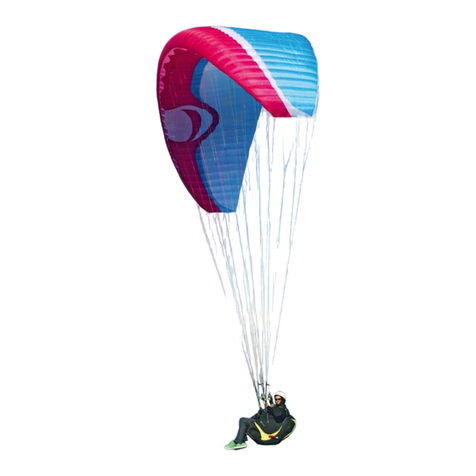
Gradient
Gradient Golden4 User manual
